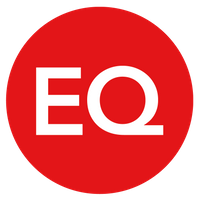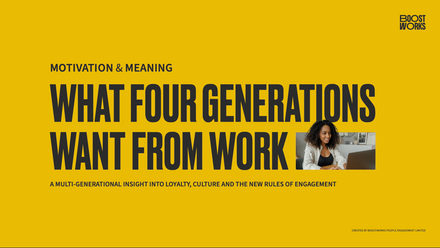The impact on reward and benefits for workers entering the job market for the first time

Generation Z, defined as those born between around 1995 to 2010, are true ‘digital-ites’. They’re ever present, messaging on the internet, on social networks and on mobile systems, according to McKinsey & Company, ‘True Gen’: Generation Z and its implications for companies (Nov 2018).
Like Millennials, they’re used to a consumer-driven world, one where next – or same – day delivery for just about any item under the sun they require is possible. We’re already seeing that employees are becoming consumers of employers too. They want to know what an employer can offer them first and foremost. And they want to know that the ‘service’ they’ll be provided with as employees will meet their needs.
Workplace wellbeing that works
When employers are considering the wellbeing needs of their younger workers, debt should represent a key consideration. 2018 research from YouGov for KPMG has shown that 42% of Millennials, for example, say that debt repayments are a significant chunk of their outgoings. In fact, it found that more than one in five 25- to- 34-year-olds say they spend more than 60% of their income the day it enters their account.
Average weekly earnings are still £18 lower than their peak before the 2008 financial crisis, according to the earnings and working hours, Oct 2019 data from the Office for National Statistics. That situation is unlikely to change for the better any time soon thanks to the economic crisis in which we currently find ourselves due to the COVID-19 pandemic.
Meanwhile, benefit design considerations should also take into account the need for customisation and accessibility when needed to help employers nurture a culture of self-care.
One-size-fits all benefits and generic communication just aren’t going to cut it. The Gen-Z and Millennial generations grew up with customisation available on tap – from coffee to the look and feel of their mobile phone. As a result, they expect their employers to offer benefits personalised to their needs and communicated in a way that better ‘speaks’ to them as individuals.
So, we have the profile. Now how does this impact on reward and benefits?
First impressions last
Let’s start with onboarding. As with all things in life, first impressions count. The employee experience starts here, so it’s important to ensure a positive experience from the outset. All too often though, communication is poor. Plus, the process can be frustratingly slow for all concerned thanks to clunky and outdated background checking systems.
This represented our experience at EQ when using a third-party provider for background checks on our new recruits. So, to solve the problem we ended up building our own platform, explains James Walton, account director at Equiniti Data. “A great user experience and a secure and GDPR compliant process were key priorities. And so CheckSafe came into being. We recognise that the time to hire is really important and by integrating a lot of the checks through APIs [application programme interfaces] we ensure the process is a quick and user-friendly experience.”
Personalised benefits
Communication of benefit entitlements at this stage also represents best practice but, all too often, the mandatory information for candidates doesn’t extend much beyond the basics.
Imagine how much more engaging that would be if the employer provided detailed information on the reward and benefit programme too at this stage, especially if it were a benefit programme designed to meet employee needs. Waiting to deliver this information when they start the role is never going to deliver optimum engagement when there’s so many other things to take on board such as their daily job!
This April, new regulations insisted that the Written Statement of Employment Particulars – a mandatory document provided to new hires – should also include information on employer sick pay entitlements. Smart employers are extending this to other employee benefits too to help attract candidates and help keep them engaged prior to officially starting.
To help employers understand what their employees want and need – and better communicate with your people – there are now tools available which provide a comprehensive three-dimensional view of your employees. These tools work by bringing real-world insights and overlaying this with employment data, breaking it down into segments based on millions of data points, including behavioural, lifestyle and geographical dimensions.
This allows you to segment your workforce to not only design a more relevant and valuable benefits programme, but to also ensure communications are better tailored to help drive benefits usage and value.
On-demand pay
The next consideration is pay. A monthly payslip and a promise that the money will be in your bank account within x days would seem like something out of the dark ages to those entering the workforce for the first time right now.
They want to see and access their pay as they earn it. In real-time and for free. It’s exactly on this basis, that Earnd was born: a provider of on-demand pay, and together with EQ, is helping clients join the dots with regards to reward, benefits and engagement.
Josh Vernon, CEO at Earnd, explains: “Starting work is often expensive for first-time employees. They’ll probably have to shell out for new work clothes, take-away lunches and transport to and from work. They might even need to move to a new city. All this before they’ve even received their first pay cheque. Without an income or the opportunity to build up a savings buffer, how are first-time employees meant to cover these costs?
“In some cases, young workers will have to borrow or use high-interest credit cards – meaning they’re starting their working life off on the back foot. That’s not to mention that when that first pay cheque finally comes it may be much less than anticipated with tax, pension and any student loan payments taken out.”
Vernon adds that managing and budgeting with a lump sum monthly payment can be difficult, particularly if you’re not used to dealing with larger amounts of money.
“While pay may come in one go, costs are spread throughout the month. Despite this, research from Portafina found that the average person spends 81% of their disposable income in the first week of being paid. That doesn’t leave a lot of money spare to cover any emergencies or surprise costs.
“Employers who offer benefits that help new workers with the financial transition into the workplace, will not only benefit from attracting the best talent, but ensure employees’ minds are on the job rather than worrying about being able to pay bills, or mounting debt.”
Benefits such as on-demand pay allow young workers to design a budget around their lives and live within their means, rather than struggling to get to the end of the month, says Vernon. When combined with financial education and savings vehicles this instils good money habits from the start, and reduces the need to borrow to meet day-to-day expenses and cover anything unexpected.
Never before has there been a better opportunity to use technology to truly engage with individuals entering the job market for the first time. And using data which reflects all aspects of their lives allows you to create a truly tailored reward package, communicated through solutions that will engage.
The author is Tim Brook, Head of Engagement & Platforms, EQ HR Solutions.
This article is provided by EQ HR Solutions.
Supplied by REBA Associate Member, Equiniti
Hi we are EQ; some may know us as Equiniti! We provide specialist reward, benefits and payroll solutions.







